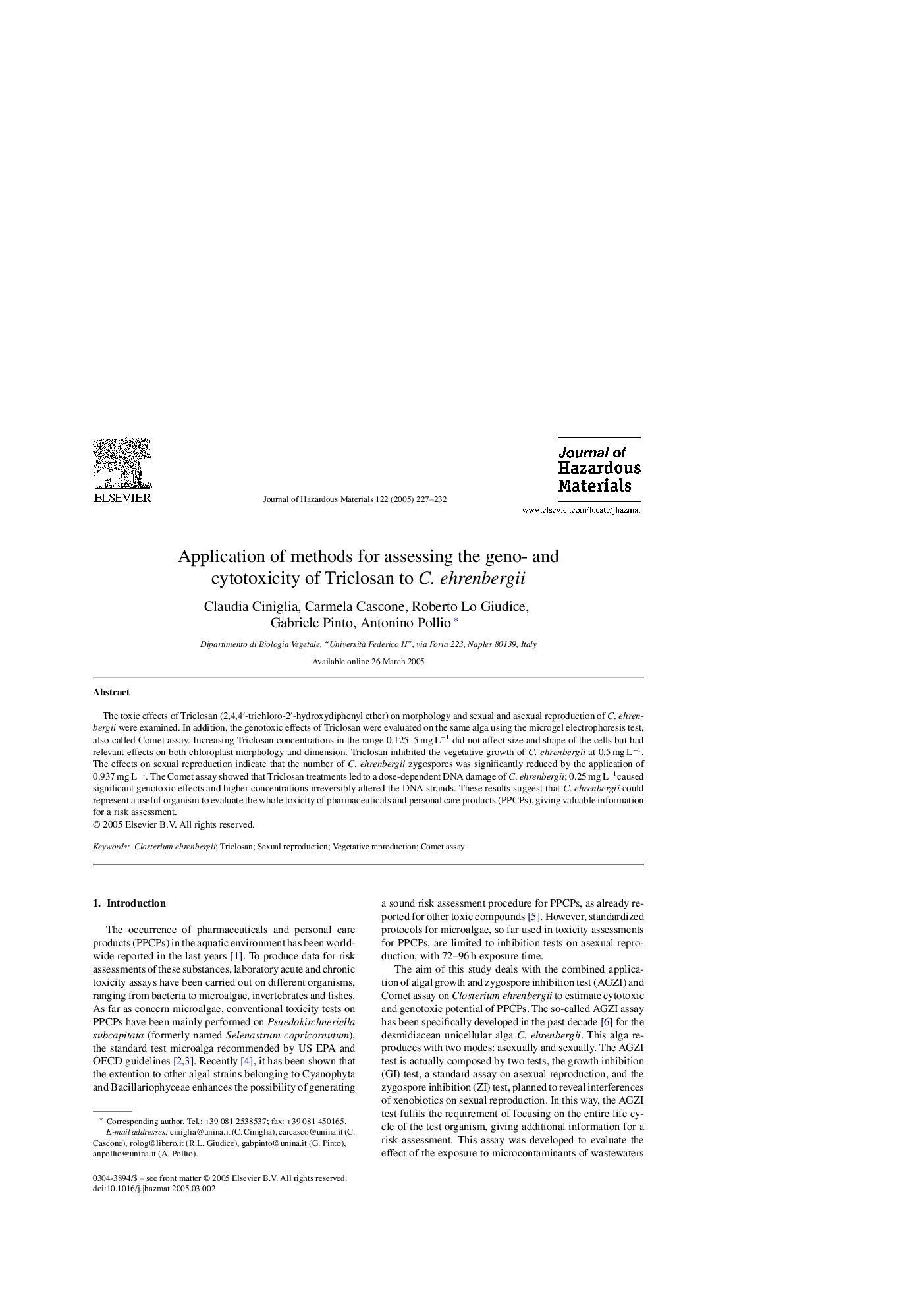| Article ID | Journal | Published Year | Pages | File Type |
|---|---|---|---|---|
| 10372841 | Journal of Hazardous Materials | 2005 | 6 Pages |
Abstract
The toxic effects of Triclosan (2,4,4â²-trichloro-2â²-hydroxydiphenyl ether) on morphology and sexual and asexual reproduction of C. ehrenbergii were examined. In addition, the genotoxic effects of Triclosan were evaluated on the same alga using the microgel electrophoresis test, also-called Comet assay. Increasing Triclosan concentrations in the range 0.125-5 mg Lâ1 did not affect size and shape of the cells but had relevant effects on both chloroplast morphology and dimension. Triclosan inhibited the vegetative growth of C. ehrenbergii at 0.5 mg Lâ1. The effects on sexual reproduction indicate that the number of C. ehrenbergii zygospores was significantly reduced by the application of 0.937 mg Lâ1. The Comet assay showed that Triclosan treatments led to a dose-dependent DNA damage of C. ehrenbergii; 0.25 mg Lâ1caused significant genotoxic effects and higher concentrations irreversibly altered the DNA strands. These results suggest that C. ehrenbergii could represent a useful organism to evaluate the whole toxicity of pharmaceuticals and personal care products (PPCPs), giving valuable information for a risk assessment.
Related Topics
Physical Sciences and Engineering
Chemical Engineering
Chemical Health and Safety
Authors
Claudia Ciniglia, Carmela Cascone, Roberto Lo Giudice, Gabriele Pinto, Antonino Pollio,
